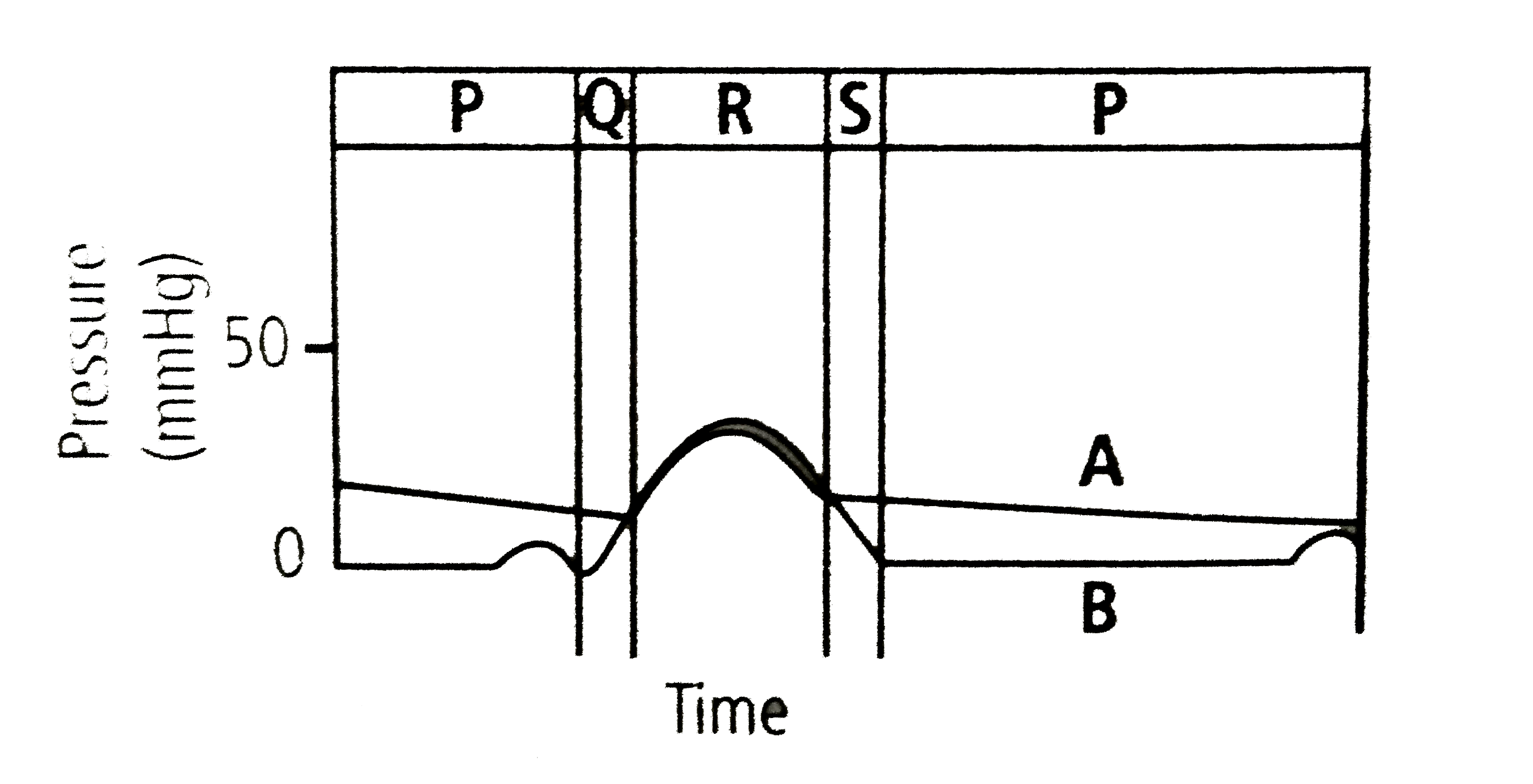Isovolumetric systole is duration between
Closure of AV valve and semilunar valve
Closure of semilunar valve and opening of AV valve
Closure of tricuspid and closure of bicuspid valve
Closure of tricuspid and opening of bicuspid valve
The correct Answer is:A
To solve the question regarding the duration of isovolumetric systole, we need to understand the cardiac cycle and the specific events that occur during this phase.
1. Understanding Isovolumetric Systole:
- Isovolumetric systole is a phase of the cardiac cycle. The term "isovolumetric" refers to a period where the volume of blood in the ventricles remains constant, despite the contraction of the heart muscle.
2. Timing of Isovolumetric Systole:
- This phase occurs during early systole, specifically after the closure of the atrioventricular (AV) valves and before the opening of the semilunar valves.
3. Closure of Valves:
- The AV valves (which include the tricuspid and bicuspid (mitral) valves) close first when the ventricles begin to contract. This prevents backflow into the atria.
- Following this, the ventricles continue to contract, but the semilunar valves (pulmonary and aortic valves) have not yet opened, leading to no change in volume.
4. Conclusion:
- Therefore, the duration of isovolumetric systole is between the closure of the AV valves and the opening of the semilunar valves.
Final Answer:
Isovolumetric systole is the duration between the closure of the AV valve and the opening of the semilunar valve.
---
- Isovolumetric systole is a phase of the cardiac cycle. The term "isovolumetric" refers to a period where the volume of blood in the ventricles remains constant, despite the contraction of the heart muscle.
- This phase occurs during early systole, specifically after the closure of the atrioventricular (AV) valves and before the opening of the semilunar valves.
- The AV valves (which include the tricuspid and bicuspid (mitral) valves) close first when the ventricles begin to contract. This prevents backflow into the atria.
- Following this, the ventricles continue to contract, but the semilunar valves (pulmonary and aortic valves) have not yet opened, leading to no change in volume.
- Therefore, the duration of isovolumetric systole is between the closure of the AV valves and the opening of the semilunar valves.
Isovolumetric systole is the duration between the closure of the AV valve and the opening of the semilunar valve.
Topper's Solved these Questions
- BODY FLUIDS AND CIRCULATIONBOOK - AAKASH INSTITUTE ENGLISHCHAPTER - BODY FLUIDS AND CIRCULATIONEXERCISE - Assignment Section - D Assertion - Reason Type Questions
9 Videos
- BODY FLUIDS AND CIRCULATIONBOOK - AAKASH INSTITUTE ENGLISHCHAPTER - BODY FLUIDS AND CIRCULATIONEXERCISE - Assignment Section - B Objective Type Questions
30 Videos
- BIOTECHNOLOGY-PRINCIPLES AND PROCESSESBOOK - AAKASH INSTITUTE ENGLISHCHAPTER - BIOTECHNOLOGY-PRINCIPLES AND PROCESSESEXERCISE - ASSIGNMENT SECTION-D (Assertion-Reason Type Question)
10 Videos
- BREATHING AND EXCHANGE OF GASES BOOK - AAKASH INSTITUTE ENGLISHCHAPTER - BREATHING AND EXCHANGE OF GASES EXERCISE - ASSIGNMENT SECTION - D
11 Videos
Similar Questions
Atrial systole
View SolutionA : Isovolumetric systole of a normal cardiac cycle is responsible for the opening of semilunar valves causing the blood flow into aortic aorta and pulmonary aorta.
R : During isovolumetric systole, intraventricular pressure increases as semilunar and AV valves are closed and ventricles are contracting .
View Solution
Knowledge Check
Refer to the given figure in which A refers to pulmonary artery pressure and B refers to right ventricular pressure. Identify P,Q,R and S in the figure and match with the list (i-iv) given below
(i) Isovolumetric ventricular contraction
(ii) Ventricular ejection
(iii) Isovolumetric ventricular relaxation
(iv) Ventricular filling
 AP-(iv),Q-(iii),R-(ii),S-(i)BP-(ii),Q-(iii),R-(i),S-(iv)CP-(iv),Q-(i),R-(ii),S-(iii)DP-(i),Q-(ii),R-(iii),S-(iv)
AP-(iv),Q-(iii),R-(ii),S-(i)BP-(ii),Q-(iii),R-(i),S-(iv)CP-(iv),Q-(i),R-(ii),S-(iii)DP-(i),Q-(ii),R-(iii),S-(iv)
Ventricular systole is stimulated by
View SolutionDuring systole of heart
View SolutionDuring isovolumetric contraction of ventricles
View SolutionDuring ventricular systole in human heart
View SolutionDifferentiate between the following pairs on the basis of what is given in brackets:
Beginning of the ventricular systole and the end of ventricular systole. (type of heart sound)
View SolutionPhase of shortest duration is
View SolutionGestation period is the duration:
View Solution
